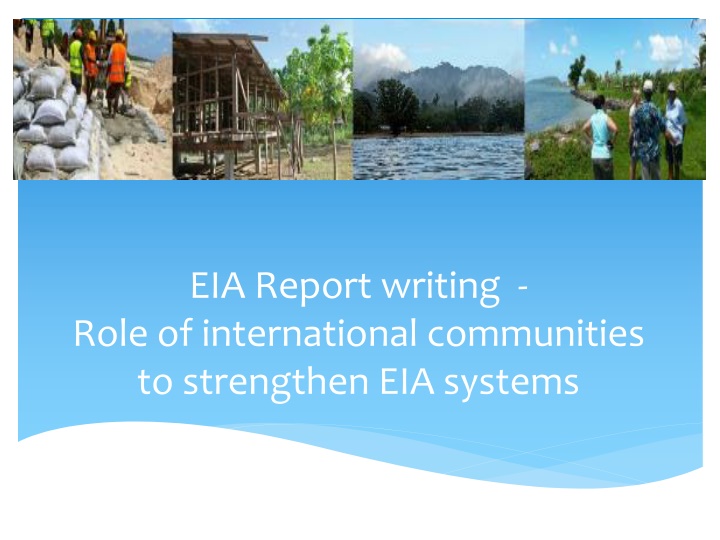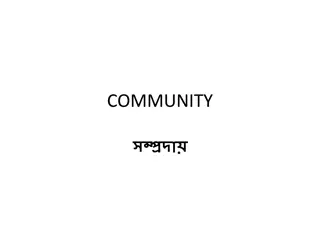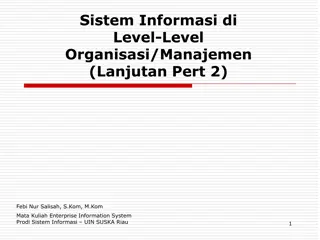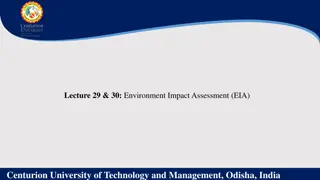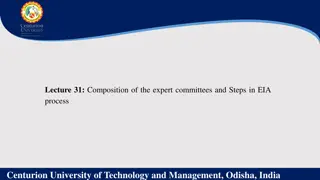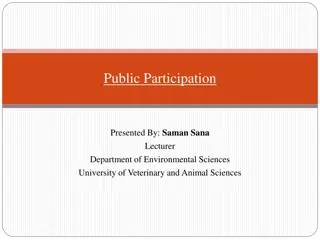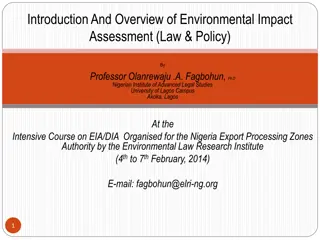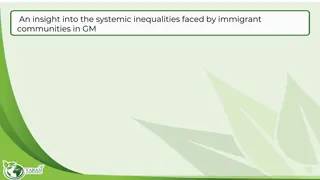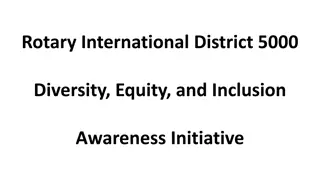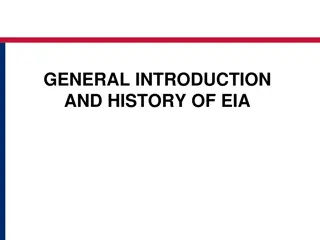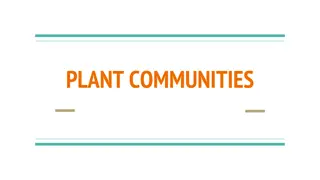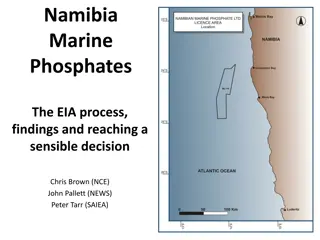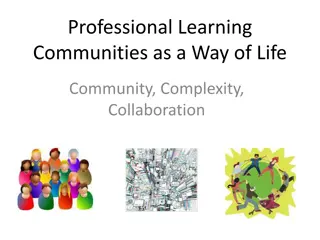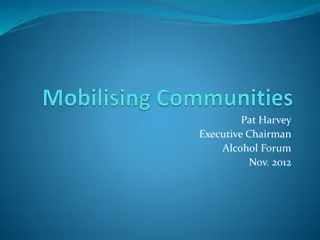Enhancing EIA Systems: Role of International Communities
This detailed report discusses the importance of international communities in strengthening Environmental Impact Assessment (EIA) systems. It covers key review areas, criteria, stakeholder participation, and the quality of predicted impacts and mitigation measures. Recommendations are provided for improving EIA processes.
Download Presentation

Please find below an Image/Link to download the presentation.
The content on the website is provided AS IS for your information and personal use only. It may not be sold, licensed, or shared on other websites without obtaining consent from the author.If you encounter any issues during the download, it is possible that the publisher has removed the file from their server.
You are allowed to download the files provided on this website for personal or commercial use, subject to the condition that they are used lawfully. All files are the property of their respective owners.
The content on the website is provided AS IS for your information and personal use only. It may not be sold, licensed, or shared on other websites without obtaining consent from the author.
E N D
Presentation Transcript
EIA Report writing - Role of international communities to strengthen EIA systems
Review areas Review criteria Weighted Rating Description of the Development Local Environment Baseline conditions 15 I Identification and Evaluation of key impacts Residual Impacts Cumulative impacts Prediction of Impact Magnitude Assessment of Impact Significance 30 II
Review areas Review criteria Weighted Rating Alternatives Mitigations ESMP Commitment 40 III Stake holder participation Presentation Balance Non-technical summary TOTAL 15 IV
The contents of the review report Background of the proposed project. A brief of project description and alternatives considered Review comments on general and specific issues. General comments These will include major gaps, deficiencies, or shortcomings observed in the reports
Consider if the report has complied with the prescribed terms of references, policies, laws, regulations and standards and other specific guidelines or sectoral checklists for that particular projects; Whether there was adequate public/stakeholder participation in the EIA process. Whether there are commitments to mitigation measures, monitoring and management plans. Whether the quality of information is clear, credible and accurate for decision- making.
Specific comments The quality of predicted impacts. The quality of mitigation measures. Adequate treatment of project alternatives. Adequate treatment of monitoring and management plans, their implementation arrangement and feedback Commitment of proponent to monitoring and management plans / programmes.
The role of public, district and others agencies and institutions. Scientific and technical soundness addressing mostly the methodological aspects, i.e. use of maps, GIS, cost/benefit analysis etc. Clarity of the statement and presentation: for the EIA to be reviewed by the public, it must be well written and understandable.
Recommendations of the review report Environmental clearance/approval with terms and conditions. Approval subject to ongoing investigation Require submission of additional information Request for a supplementary EIA report In rare cases, the project may be rejected.
Role of international communities Int. Finance Corporation (IFC)- introduced EIA related standard- setting for private sector investment. Asian Development Band (ADB)- introduced its efforts to strengthen and use country safeguard systems (CSS) through technical assistance, policy dialogue, and partnership with other institutions US EPA-referred to its support for strengthening EIA through capacity building, regional meetings, technical support including EIA review guidelines, and country- specific consultations.
JICA- emphasized the importance of the role of donors to play for strengthening EIA implementation in recipient countries. Australian Government-highlighted the Department of Foreign Affairs and Trade(DFAT) aid and environment policy and commitment to support partner governments to build EIA systems and implementation capacity. Conservation International (CI Japan) introduced a role of NGOs to engage in environmental impact assessment particularly on biodiversity.
Support Areas Technical Supports in Studies Technical Cooperation Projects Training and Dialogue Programs Support for Capacity building Support for Implementation.
